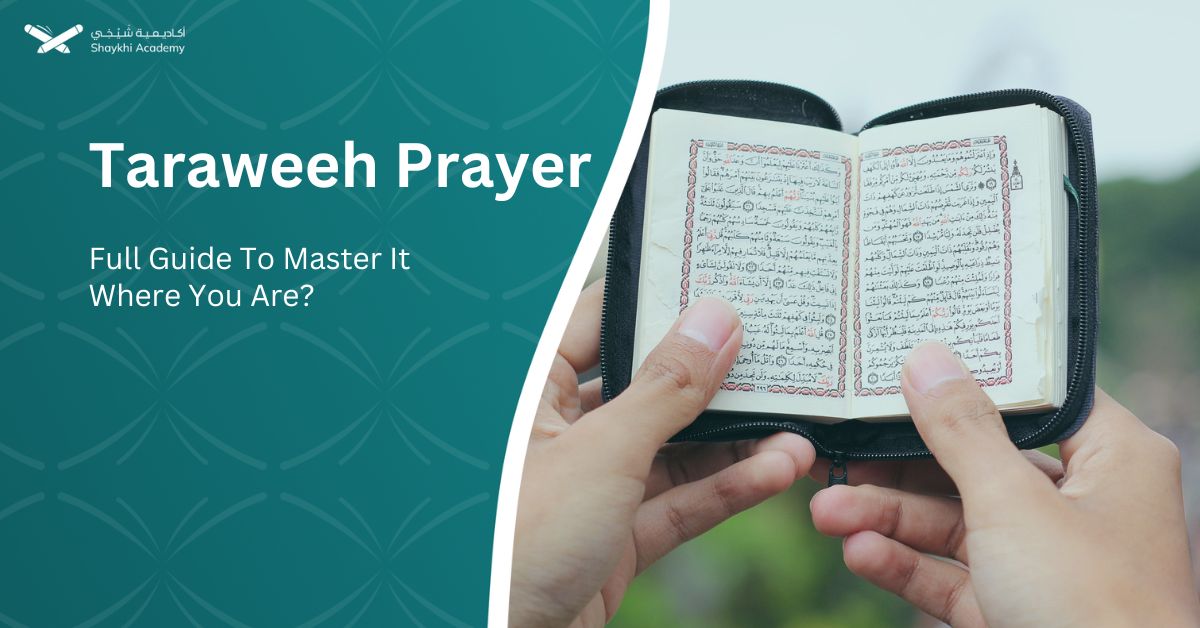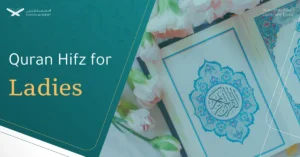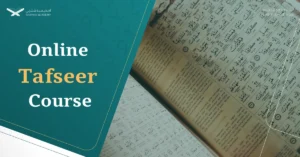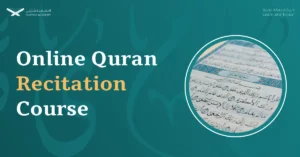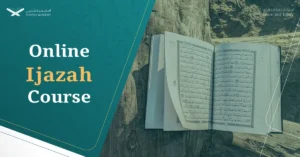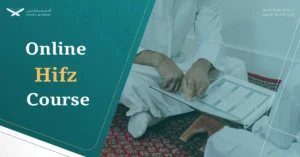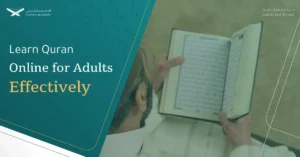Muslims are strongly encouraged to perform Taraweeh Prayer as it is one of the most rewarding worships in Islam, in which believers are closest to Allah. Taraweeh is a voluntary night prayer that is performed after the Al-Isha’a prayer during the Holy month of Ramadan.
In this article, we will discuss in detail everything related to Taraweeh prayer including its significance and benefits, how many rakat in Taraweeh? What are the rules for Taraweeh prayer? And how to perform the Taraweeh prayer?
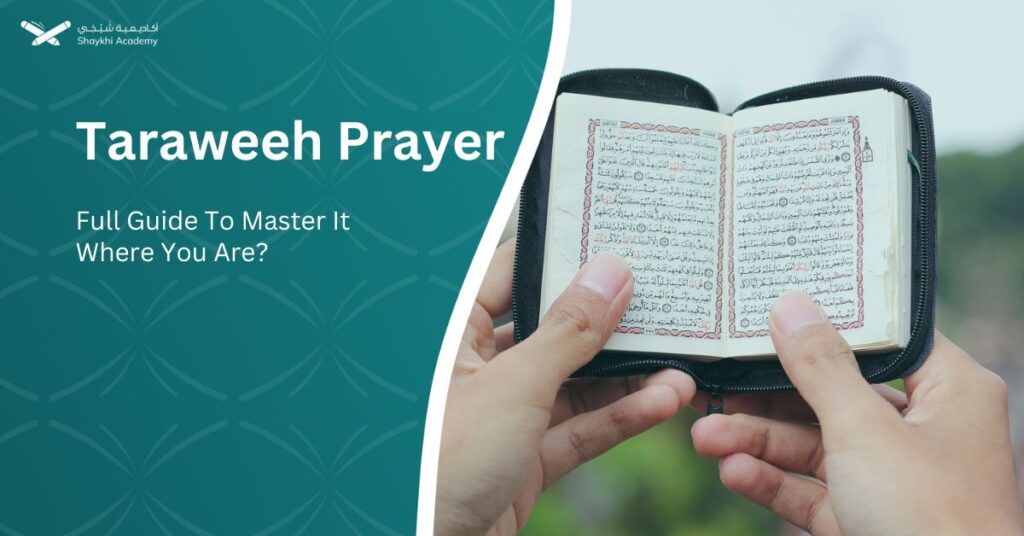
What is the Taraweeh Prayer?
Taraweeh prayer is considered one of the most unique features of the sacred month. Millions of Muslims around the globe gather in mosques during Ramadan to perform these prayers, hoping to achieve the blessings and forgiveness of Allah the Almighty.
The word Taraweeh in the Arabic language is the plural of “Tarweehah” which means to sit or rest. The reason for this is that Muslims take a little rest in between the Rakat of this prolonged night prayer.
Tarawih prayer time
Although Tataweeh prayers are performed in mosques shortly after Al-Isha’ prayer. Taraweeh prayer can be performed at any time between Al-Isha’ prayer and Al-Fajr prayer.
How to pray Taraweeh?
Taraweeh is generally performed the same way as night prayers that Muslims do throughout the year . Except that it is characteristically done as a congregational (Salat Jama’a) prayer in the mosque which is not the case for usual night prayers. As for the way of praying Taraweeh, it was narrated by Ibn Umar that:
Once a person asked Allah’s Messenger about the night prayer. Allah’s Messenger replied, “The night prayer is offered as two Rakat followed by two Rakat and so on and if anyone is afraid of the approaching dawn (Fajr prayer) he should pray one Rak’ah and this will be a Witr for all the Rakat which he has prayed before.”
How to pray Taraweeh in mosque?
You should follow the same steps while praying in the mosque except that you will be following the Imam’s prayer instead of performing the prayers on your own.
There are important rules for attending prayers in the mosque, for instance, it is important to be quiet and concentrate on the recitation of the Imam. Additionally, you should avoid standing near the exit of the mosque, and crossing in front of others. Taking care of your personal hygiene and cleaning up your place before you leave are also crucial.
Can you pray Taraweeh at home?
Yes, you can perform Taraweeh Prayer either at home with your family members or on your own. You can also pray Taraweeh as a congregational prayer in the mosque. You can even attend part of the Taraweeh prayer in the mosque with the Imam and complete the rest of your prayer at home.
Nevertheless, it is preferable for men to attend Taraweeh prayer in the mosque except for those who are unable to do so. As for Muslim women Praying at home is always preferable to praying in the mosque.
How to pray Taraweeh at home?
You can pray Taraweeh at home either with your family or alone. To perform Taraweeh prayers at home, begin by preparing yourself both physically and spiritually. Start by performing Wudu’ (ablution) to purify yourself, ensuring to wash your hands, face, forearms, and feet. Dress modestly and choose a clean, quiet place for prayer to minimize distractions.
Once ready, set your intention for the night prayer and stand facing the Qiblah. Begin with Takbeerat Al-Ihram (saying Allahu Akbar) and recite Dua Al-Istiftah. Then, recite Surah Al-Fatiha followed by some verses from the Holy Quran. Proceed through the prayer steps, including rukou’, sujood, and Tashahhud, maintaining focus and reverence throughout.
After completing the set of two Rak’as, conclude with one Rak’a of Witr prayer. This final Rak’a is an essential part of Taraweeh prayers. Recite Dua Al-Tashahud after the second Sujood and make Tasleem to conclude the prayer.
Throughout the Taraweeh prayer, ensure sincerity and devotion in your worship. By following these steps and maintaining a serene atmosphere, you can effectively perform Taraweeh prayers at home, experiencing the spiritual benefits of this blessed month.
Let us discuss in detail the steps of praying Taraweeh at home.
Prepare yourself for Taraweeh prayers
1. Make Wudu’ (Ablution)
Making Wudu’ or ritual ablution is essential prior to performing Taraweeh prayer. This is done by washing your hands, rinsing your mouth, Inhaling water into your nose, washing your face, washing your forearms up to the elbows, wiping your head and ears, and finally washing your feet to the ankles.
2. Put on appropriate clothes for prayer
It is important before you pray Taraweeh to put on clean appropriate clothes for praying. Women should completely cover up except for the face and hands. Additionally, the clothes should not be transparent or tight. As for men they should cover the area between the navel and knees.
3. Choose a quiet and clean place for prayers
It is essential to choose a place that is away from all sorts of distraction, so that you can focus on your recitation and prayer. It is also important to ensure that the place where you are praying is free from physical impurities. The same applies to your clothes and your praying Mat.
Steps of Taraweeh prayers
After getting prepared for Taraweeh prayer by making Wudu’ and dressing up, follow the following steps.
1. Set your intentions for the night prayer
Making an intention is one of the important conditions of performing worship in Islam.
Therefore, it is crucial to set your intention before you proceed with your Taraweeh prayer. It is required to make the intention within your mind and heart rather than conveying it aloud.
2. Stand up straight Looking towards the direction of al Qiblah
Start by facing the direction of Qibla (Which is the direction of Mecca) and stand straight.
3. Raise your hands and Say Allahu Akbar (Takbeerat Al-Ihram) then say Dua Al-istiftah
After that, raise both of your hands to the level of your ears or to the level of your shoulders and say Takberrat Al-Ihram (Allahu Akbar) then say Dua Al-Istiftah.
4. Read Surah Al-Fatiha And some verses of the Holy Quran
Put your right hand over your left hand, with your eyes focused on the place of Sujood. After that, start reading surah Al-Fatiha followed by verses of the holy Quran. Note that verses of the Quran should be read in order and never in the reverse order.
5. Make rukou’ And say Subhana Rabbi Aladhim three times
Raise your hands again saying Allahu Akbar and bend down with straight back, while grabbing both knees with your hands. Then, say “Subhana Rabbi Aladhim” three times.
6. Stand up straight and say Sami’allahu liman hamidah Rabbana Wa Laka Alhamd
Raise from rukou’ saying “Sami’a Allahu Liman Hamidah”. Then say “Rabbana Wa Laka Alhamd” while you are standing.
7. Make Sujood and say Subhana Rabbi Al A’la
Say “Allahu Akbar” and make Sujood. While you are in the Sujood position say “Subhana Rabbiya Al-A’la” three times. Your forehead, tip of your nose, palms, and knees should be resting on the ground. While your fingers and toes should be pointing towards the Qiblah.
8. Sit and say dua
Sit on your knees and say the Dua between the two sajdah which is: “Allahuma-ighfirlee” (twice) which means “O Allah forgive me”.
9. Make Sujood for the second time and say Subhana Rabbi Al A’la
Repeat the Sujood in the same way as before saying “Subhana Rabbiya Al-A’la” three times.
10. Stand up straight and repeat the same steps for the second Rakah
Raise from Sujood saying “Allahu Akbar” then stand up and repeat the same steps as the first Rak’a.
11. After the second sujood say dua Al-Tashahud
After you make the second Sujood, recite the “Tashahhud”. It is Sunnah to extend your right index finger while saying Tashahhud.
12. Make Tasleem
After completing the tashahhud, make Tasleem by moving your head towards the right shoulder and then towards the left shoulder while saying “Assalamu Alaykum Wa Rahmatullah”.
13. Repeat the set of 2 Rak’a and then conclude with Witr
You can repeat the same set of two Rak’a and then conclude your prayers with one Rak’a which is called Al-Witr.
Is the Taraweeh prayer 8 or 20 Rakats?
According to the hadith narrated by Abu Salamah ibn Abd al Rahman, who asked Aishah (may Allah be pleased with her), “How did the Messenger of Allah (peace and blessings of Allah be upon him) pray during Ramadan?” She said:
“He did not pray more than eleven rak’ahs in Ramadan or at other times. He would pray four, and do not ask how beautiful and long they were, then he would pray four, and do not ask how beautiful and long they were, then he would pray three. I said, ‘O Messenger of Allah, will you sleep before you pray Witr?’ He said, ‘O ‘Aishah, my eyes sleep but my heart does not”. ( al-Bukhari, 1909; Muslim, 738) prophet Muhammad peace and blessings be upon him used to pray 11 rakat.
However, there is no evidence that night prayers should not exceed 11 rakat. Which makes it permissible for Imams to segment these long rakat into 20 shorter ones to decrease the burden on Muslims.
Taraweeh prayer dua
Prophet Muhammad peace and blessings be upon him used to say Dua Al-Qunot in
It was narrated from Ubayy bin Ka’b that the Messenger of Allah used to pray Witr and he would recite Qunut before Ruku’. (Sunan Ibn Majah 1182)
Another Taraweeh Dua prophet Muhammad peace and blessings be upon him used to say was that narrated in the Hadith that the Messenger of Allah used to recite in witr:
Glorify the Name of your Lord, the Most High;” and “Say: O you disbelievers (Surah Al-kaferon)!;’ and ‘Say: He is Allah, (the) One (Surah Al-A’la).’ And when he had finished praying, he said: Subhanal-Malikil-Quddus (Glory be to the Sovereign, the Most Holy) three times.” (Sunan an-Nasa’i 1740)
It is worth mentioning that it is crucial to say the known prayers from the Quran and Sunnah during the Taraweeh prayer avoiding all acts of innovation (bida’a). As the prophet Muhammad Peace and Blessings Be Upon Him said “Whoever does an action that is not part of this matter of ours (Islam), will have it rejected.” (Muslim, 3243). An example of the innovations introduced to Taraweeh is the communal dua after prayer since this practice was not done by the prophet Peace be upon him and his companions.
Is Taraweeh compulsory?
No, Taraweeh prayer is not compulsory. It is considered a recommended Sunnah. However, Muslims are strongly encouraged to engage in this prayer due to its great rewards.
Did the prophet pray Taraweeh?
Yes, Prophet Muhammad Peace and Blessings Be Upon Him prayed Taraweeh. However, he didn’t pray it every day in Ramadan with his companions so that it would not be considered a compulsory prayer for the Muslims.
Narrated Zaid bin Thabit:
Allah’s Messenger made a small room (with a palm leaf mat). Allah’s Messenger came out (of his house) and prayed in it. Some men came and joined him in his prayer. Then again the next night they came for the prayer, but Allah’s Messenger delayed and did not come out to them. So they raised their voices and knocked the door with small stones (to draw his attention). He came out to them in a state of anger, saying, “You are still insisting (on your deed, i.e. Tarawih prayer in the mosque) that I thought that this prayer (Tarawih) might become obligatory on you. So you people, offer this prayer at your homes, for the best prayer of a person is the one which he offers at home, except the compulsory (congregational) prayer.”
(Sahih al-Bukhari 6113)
Benefits of Taraweeh Prayer
Praying Taraweeh has a lot of spiritual, physical, and social benefits. Let us discuss in brief some of these benefits.
Spiritual benefits of Taraweeh
Among the spiritual benefits of Taraweeh night prayer is that it is an opportunity to
reflect on the meanings of the Quranic verses and deeply understand the wisdom of the Surahs of the Quran. It is also a chance for Hafiz and Hafizah of the Quran to revise and establish their Hifz.
Another spiritual benefit of Taraweeh prayers is the forgiveness of all the previous sins of whoever prays it throughout Ramadan.
As narrated that Allah’s Messenger said regarding Ramadan, “Whoever prayed at night in it (the month of Ramadan) out of sincere Faith and hoping for a reward from Allah, then all his previous sins will be forgiven.” (Sahih al-Bukhari 2008)
Physical benefits of Taraweeh Prayer
Among the various benefits of Taraweeh prayers are the health benefits. As it is considered a sort of physical activity that is beneficial for the body. It also reduces the chance of excessive food intake between Iftar and Suhoor meals.
Social benefits of Taraweeh
Taraweeh prayers also have many social benefits. It is a chance for members of the Muslim community to gather every day in the mosque, which strengthens the bonds of brotherhood between them.
Additionally, gathering Muslims in one row to perform the Taraweeh prayer despite the difference in their social levels unifies the Muslim Ummah and enhances the feeling of equity between its members.
Unlock the Path to Quranic Mastery with Shaykhi Academy!
Are you seeking the finest Quranic education right from the comfort of your home? Look no further! Shaykhi Academy stands out as a premier online Quran learning platform, dedicated to providing exemplary education to both children and adults.
Why Choose Shaykhi Academy?
- Connect with highly qualified native tutors.
- Flexible scheduling to suit your busy lifestyle.
- Affordable classes tailored for all levels.
- Accessible from anywhere around the globe.
Discover Our Range of Courses:
- Arabic Noorani Qaida: Lay a solid foundation for Quranic studies.
- Online Quran Classes for Kids: Engaging lessons for lifelong learning.
- Tajweed Rules for Kids: Learn to recite with confidence.
- Quran Hifz for Kids: Step-by-step guidance to memorize the Quran.
- Quran for Adults: Introduce yourself to Quran reading and Tajweed rules.
- Online Arabic Courses: Master the language of the Quran.
- Islamic Studies: A wide range of topics related to Islam, including theology, law, Quranic studies, Hadith.
Don’t Miss Out on Your Chance to Excel!
Whether you’re a beginner or seeking advanced knowledge, Shaykhi Academy can guide you! Book your free trial now and make Ramadan 2024 your Quranic turning point!
Summary
Taraweeh prayer is a night prayer that Muslims perform after Al-Isha’ prayer during the holy month of Ramadan. It is also considered one of the most unique characteristics of the holy month.
It is permissible for Muslims to pray Taraweeh either in the mosque or at home. Hence it is essential for every Muslim to learn how to perform this worship so as not to miss the treasure of rewards and blessings of this prayer.
